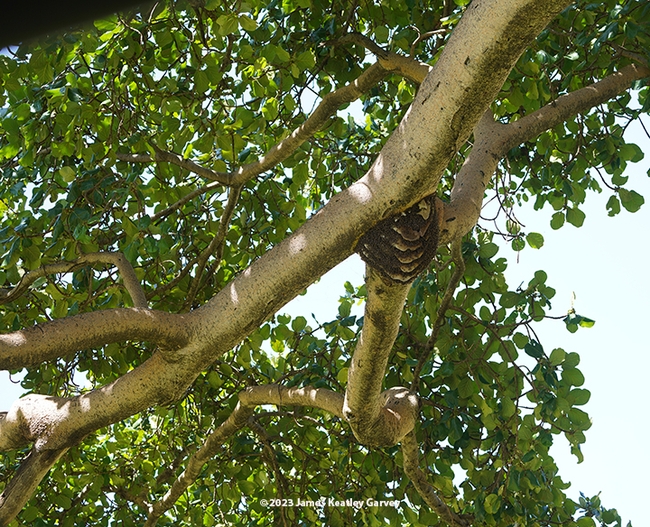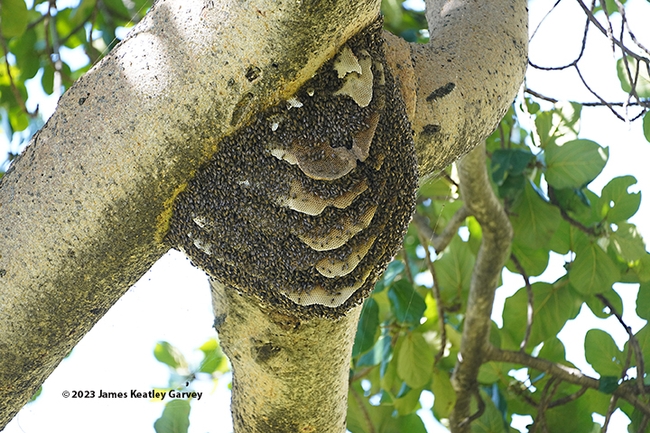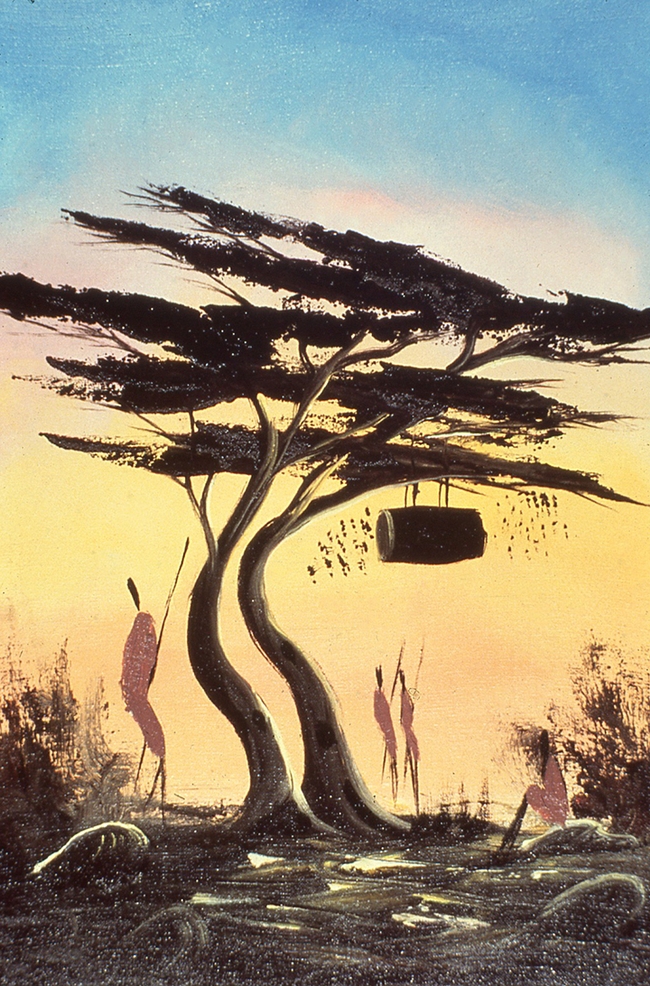- Author: Kathy Keatley Garvey
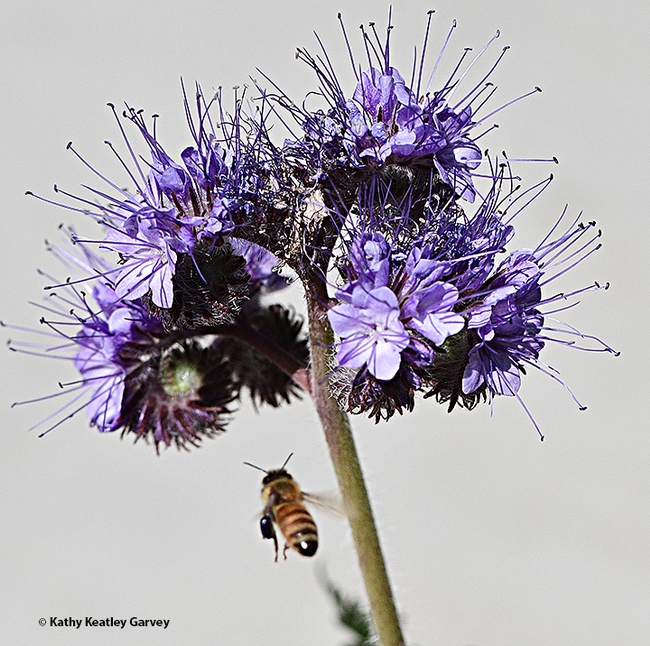
You're shaking my confidence daily...
--"Oh, Cecelia" written by Paul Simon of Simon and Garfunkle
If you think of the song, "Oh, Cecelia,' every time you pronounce Phacelia (the plant), you're not alone.
Pollinators, especially honey bees, bumble bees and syrphid flies, love the lacy Phacelia (Phacelia tanacetifolia) at the Joseph and Emma Lin Biological Orchard and Garden (BOG) near the Botanical Conservatory at the University of California, Davis.
P. tanacetifolia, a leggy three-foot plant clustered with light blue to purple flowers, is a member of the borage family, Boraginaceae. It's native to the southwestern United States and northern Mexico.
Where is the BOG? Back of Parking Lot 26 on Kleiber Drive.
What's in it? It's landscaped with several dozen species of heritage fruit trees and colorful mini-gardens.
A sign describes the garden. "This unique landscape showcases a slice of biodiversity in the heart of the central campus and is a hub for outdoor learning...The drought-tolerant plants growing in these beds are all from Mediterranean regions with similar summer-dry climates in Davis, including the Mediterranean, South Africa, Chile and Australia. The beds demonstrate the diversity of plants that can grow in the Sacramento Valley and provide students and campus visitors with a variety of species to observe and study."
So, basically, BOG is an outdoor laboratory for hands-on learning. "Classes perform biodiversity assessments, record insect observations and monitor the onsite weather stations," Instagram relates. Student employees, interns and volunteers at the Botanical Conservatory take care of the garden.
Among the flowers blooming in the BOG in the early spring, by color:
- Red: European red flax, Linum grandiflorum rubrum, an annual that's native to Algeria
- Yellow: tidy tips, Layia platyglossa, an annual that's native to California
--The seep monkey flower, Mimulus guttatus, native to California
--Lupine, Lupinus, native to North America. - Blue: Desert bell, Phacelia campanularia, an annual herb that is native to California and endemic (limited) to California.
- Lavender: Phacelia, also called Lacy phacelia, blue tansy or purple tansy (Phacelia tanacetifolia), native to the southwestern United States
--Lupine: Lupinus, native to North America - Red-Orange-Yellow: Blanket flower or Gaillardia (Gaillardia × grandiflora), native to North and South America
- Orange: California golden poppies, Eschscholtzia californica
But it's the Phacelia that's the big draw today.
Phacelia, you're breaking my heart...
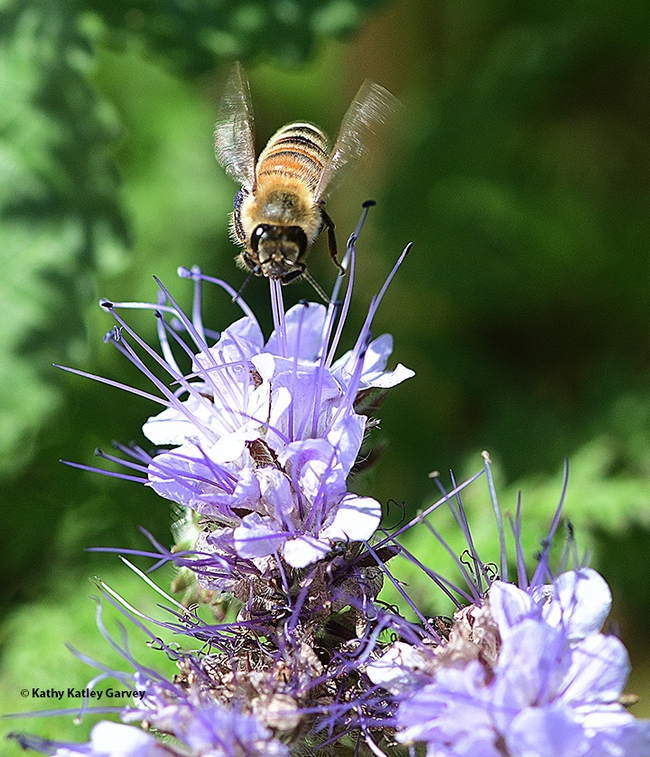
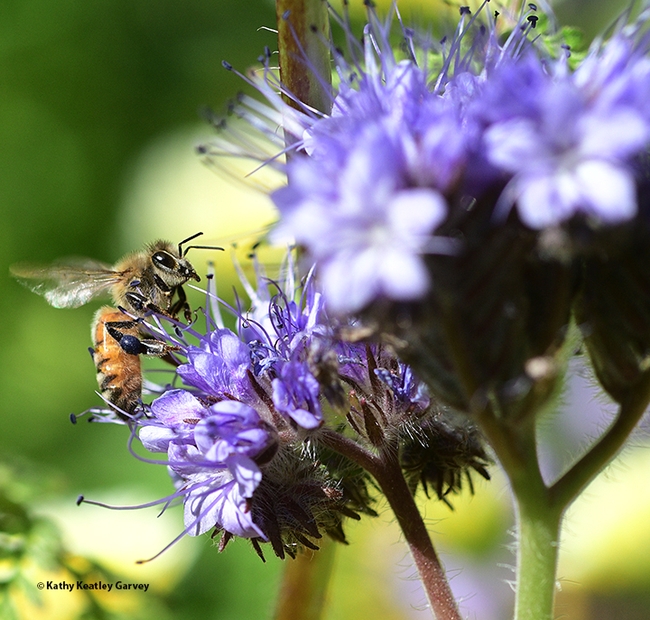

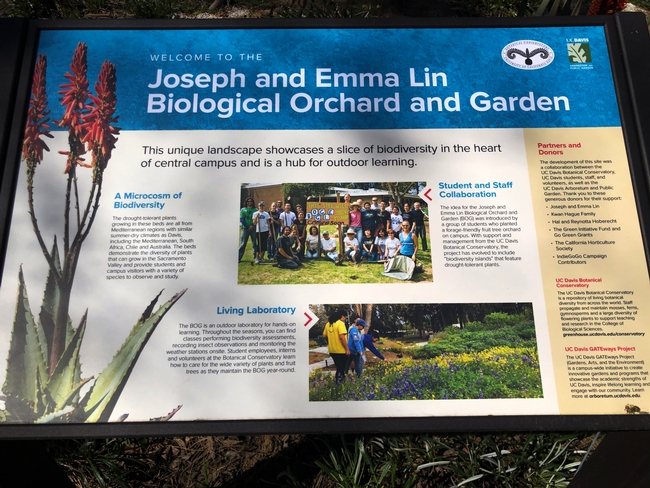
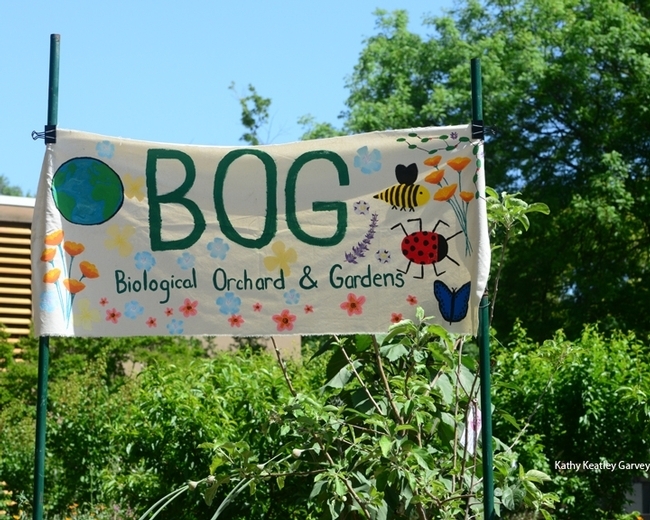
- Author: Kathy Keatley Garvey
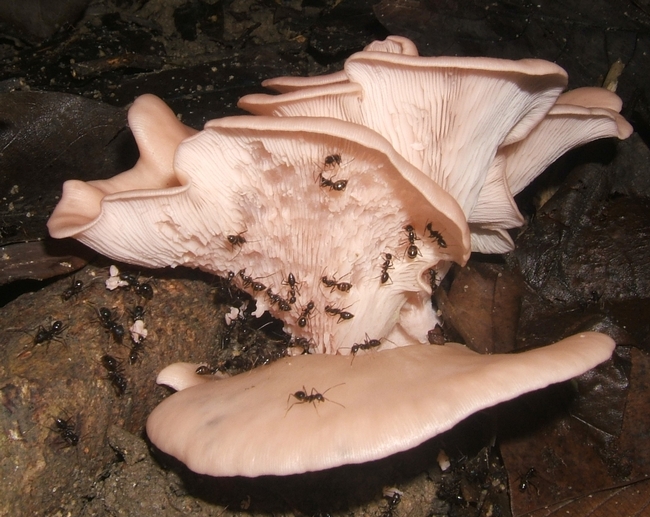
So says biology professor Terry McGlynn of California State University, Dominguez Hills.
He'll present a seminar, hosted by the UC Davis Department of Entomology and Nematology on “Lessons about Thermal Ecology from Rainforest Ants” at 4:10 p.m., Wednesday, April 5 in 122 Briggs Hall. The seminar also will be virtual. The Zoom link:
https://ucdavis.zoom.us/j/95882849672.
McGlynn, both an ecologist and an entomologist, directs the California Desert Studies Consortium, which operates the Desert Studies Center, a large field station in the Mojave Desert. He is an appointed research associate in the Department of Entomology, Natural History Museum of Los Angeles County.
McGlynn focuses on tropical ecology, biology of detrital food webs; behavioral and community ecology of rainforest ants; and undergraduate natural history education.
"We do research to learn how insects respond to environmental challenges, he writes on his lab website, https://leaflitter.org/. "In this era of rapid environmental change, we need scientific knowledge and evidence-based policies to protect human welfare and biodiversity. Our climate crisis is complicated by urbanization, the spread of non-indigenous species, and changes in food web structure. Our research agenda addresses these concerns while preparing the next generation of scientists to solve problems using equitable and just practices within and beyond our academic community."
To increase the accessibility of evidence-based teaching practices, he wrote The Chicago Guide to College Science Teaching (University of Chicago Press, 2020), which emphasizes kind and equitable teaching.
McGlynn has led several National Science Foundation-funded projects to support international research opportunities for undergraduates, and has served as the director of Undergraduate Research at CSUDH. He is a 2022 Fellow of the Earth Leadership Program, and in 2021, received the CSUDH Presidential Outstanding Professor Award. He serves on the editorial board of Biotropica and is an associate editor of Insectes Sociaux.
McGlynn writes a blog, Small Pond Science and tweets at @hormiga. He holds a bachelor's degree in biology (1993) from Occidental College and a doctorate (1999) in environmental, population and organismic biology from the University of Colorado, Boulder.
Seminar coordinator Emily Meineke, urban landscape entomologist and assistant professor, announced the spring seminars earlier this week. For technical issues (Zoom), she may be reached at ekmeineke@ucdavis.edu.
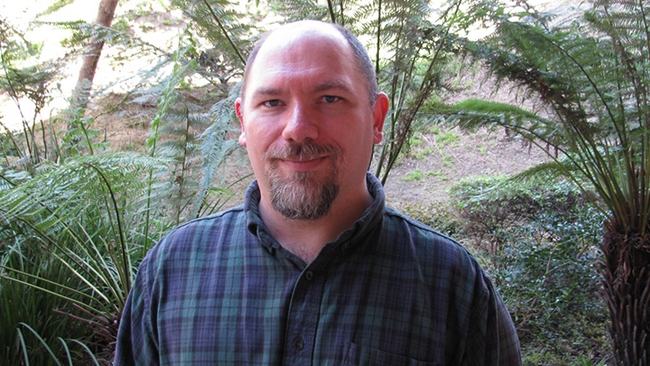
- Author: Kathy Keatley Garvey

Want to learn about ants? Check. Bees? Check. Caterpillars? Check. And more? Check.
The spring seminars begin Wednesday, April 5 and will continue on Wednesdays through June 7. All in-person seminars will be in Room 122 of Briggs Hall, starting at 4:10 p.m. The seminars also will be virtual. The Zoom link:
https://ucdavis.zoom.us/j/95882849672.
Here's what's on tap:
Wednesday, April 5
Terry McGlynn
Professor, California State University, Dominguez Hills
Title: “Lessons About Thermal Ecology from Rainforest Ants”
Wednesday, April 12
Christopher Mayack
Research entomologist, USDA-ARS
Title: “Chemical Biomarkers and the Physiological Underpinning of Honey Bee Health Decline”
Wednesday, April 19
No seminar
Wednesday, April 26 (Zoom only)
Sam Jaffe
Founder and director of The Caterpillar Lab
Title: “Using Native Caterpillars, Their Ecological Connections, and Novel Outreach Tools to Showcase the Importance of Biodiversity”
Wednesday, May 3
John Hargrove
Senior research fellow and professor emeritus of mathematical sciences
Stellenbosch University, Western Cape, South Africa
Title: “Tsetse, Trypanosomiasis and Climate Change: What Can We Learn from Field Data Collected in the Zambezi Valley of Zimbabwe?”
Wednesday, May 10
Irene Newton
Professor of biology, Indiana University, Bloomington
Title: “Friends with Benefits: Protective Microbial Symbioses in the Honey Bee”
Wednesday, May 17 (Zoom only)
Paulo Vieira
Molecular biologist USDA-ARS
Title: “Beech Leaf Disease: an Emergent Threat to Beech Forest Ecosystems in North America”
Wednesday, May 24
Katie Thompson-Peer
Assistant professor, School of Biological Sciences, UC Irvine
Title: “Cellular Mechanisms of Dendrite Regeneration after Neuron Injury”
Wednesday, May 31
No seminar
Wednesday, June 7
Jill Oberski
Doctoral candidate, Phil Ward lab, UC Davis
Exit seminar: “Phylogenetics and Biogeography of the Pyramid Ants”
For more information, including any technical issues with Zoom, Meineke may be reached at ekmeineke@ucdavis.edu.
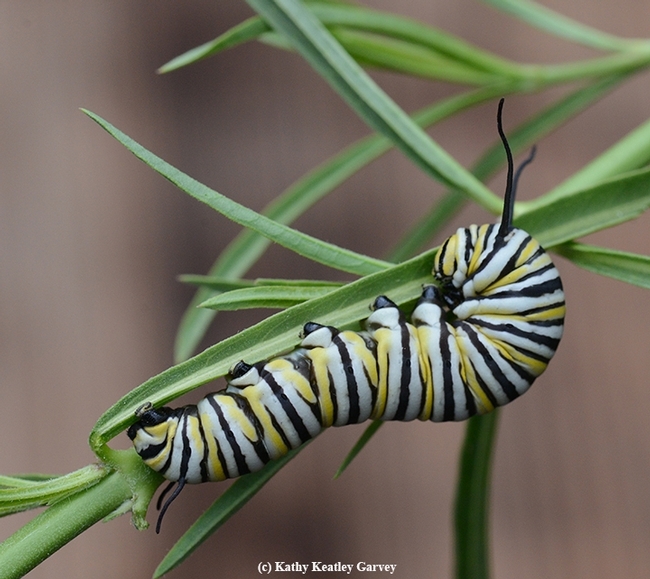
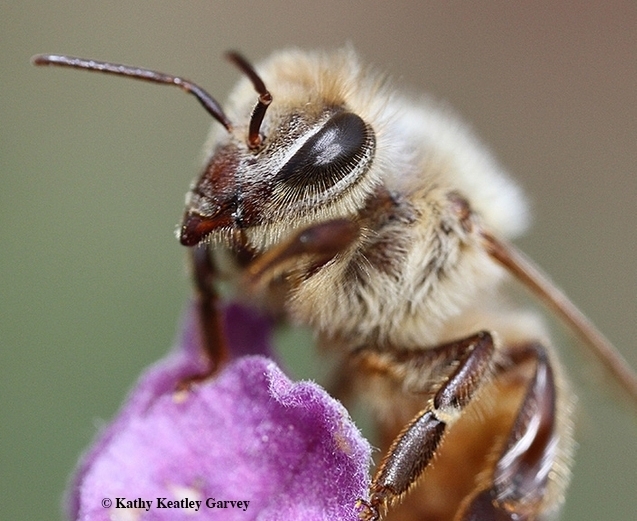
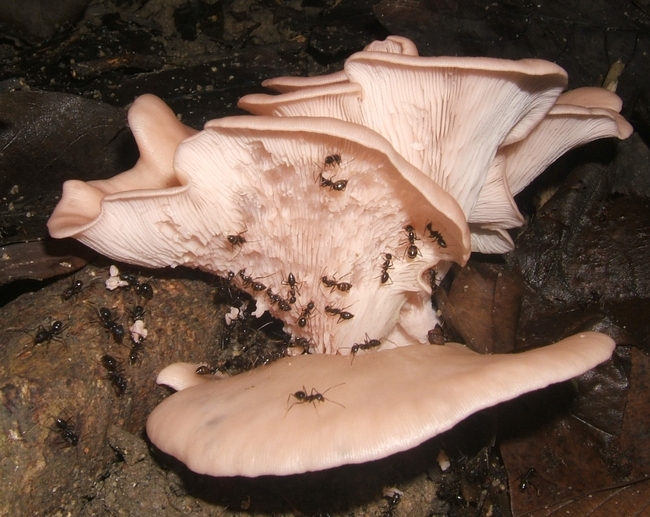
- Author: Kathy Keatley Garvey
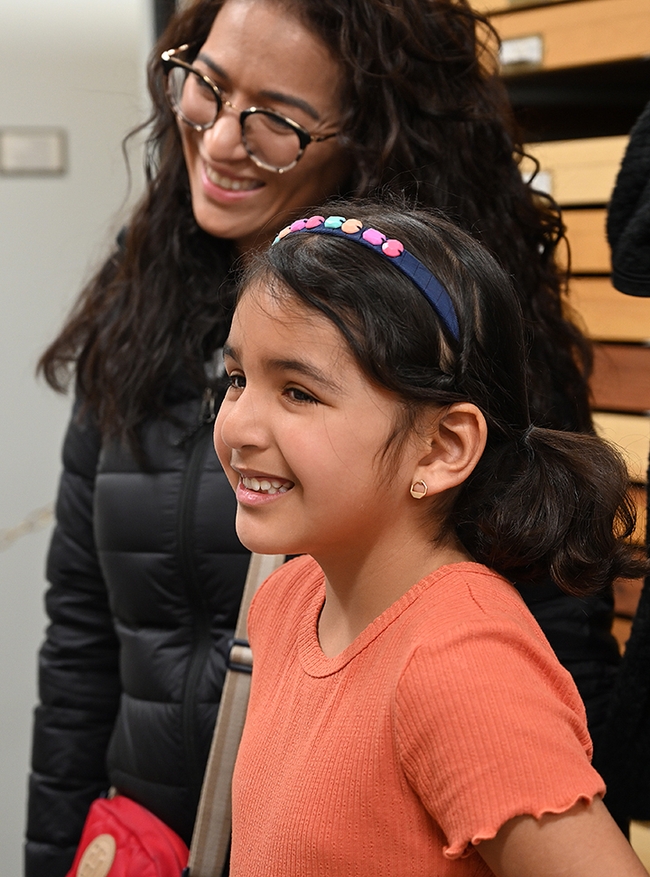
Visitors "can learn about the defensive strategies these insects use for survival, such as camouflage, warning coloration, mimicry of other species," says entomologist Jeff Smith, who curates the Lepidoptera collection. "We love to teach about the importance of Lepidoptera in the environment, either to their habitat directly or possibly as an indicator of the health of their habitat."
Both Smith and fellow Bohart associate Greg Kareofelas are usually there to show the specimens and answer questions. The Bohart draws scientists and citizens from all over the world.
At the last open house, Kareofelas and Bohart research associate Britanny Kohler showed specimens to a family from Mexico City: mother Martha Leija, daughter Valentina, 8, and father Mario Preciado.
Valentina is keenly interested in morphos and monarchs, and the excitement on her face told it all.
"Without a doubt, the biggest 'Wow Factor' comes from the huge and brilliant metallic blue morpho butterflies from tropical America," Smith said.
The Bohart's monarch butterfly specimens comprise five drawers and they include specimens from the Pacific Islands, Australia and Eastern Asia, as well as the United States.
When are the next open houses?
- Saturday, April 15. The Bohart will be open from 10 a.m. to 2 p.m. as part of the campuswide UC Davis Picnic Day. The Bohart theme? "Bugs, Boom, Bang."
-
Sunday, May 21. "Ants!" will theme this open house. It's set from 1 to 4 p.m.
-
Saturday, July 22. It's the traditional Moth (and Flies) Night. The event takes place in the evening from 8 to 11.
The open houses are always free and family friendly.
The Bohart Museum, directed by UC Davis distinguished professor Lynn Kimsey, houses a global collection of nearly eight million specimens. It is also the home of the seventh largest insect collection in North America, and the California Insect Survey, a storehouse of the insect biodiversity. Noted entomologist Richard M. Bohart (1913-2007) founded the museum in 1946.
Special attractions include a live "petting zoo," featuring Madagascar hissing cockroaches, walking sticks and tarantulas. Visitors are invited to hold the insects and photograph them. The museum's gift shop, open year around, includes T-shirts, sweatshirts, books, jewelry, posters, insect-collecting equipment and insect-themed candy.
The Bohart Museum's regular hours are from 9 a.m. to noon and 1 to 5 p.m. Mondays through Thursdays. The museum is closed to the public on Fridays and on major holidays. Admission is free. More information is available by contacting (530) 752-0493 or Tabatha Yang, education and public outreach coordinator at tabyang@ucdavis.edu
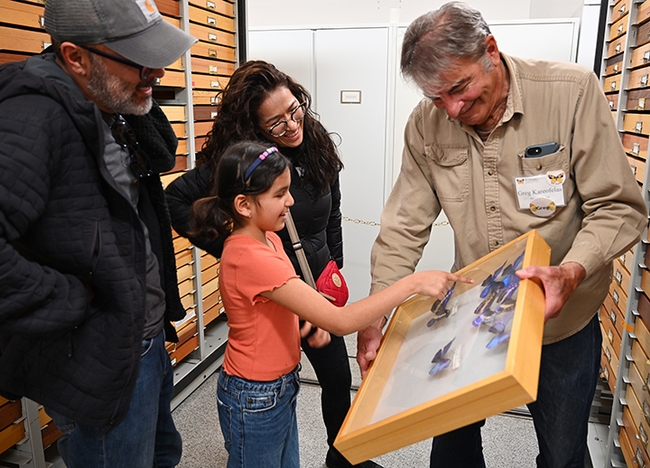
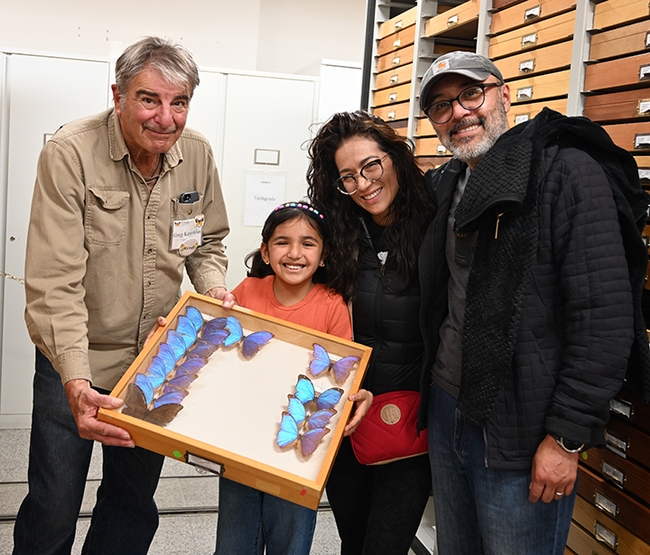
- Author: Kathy Keatley Garvey
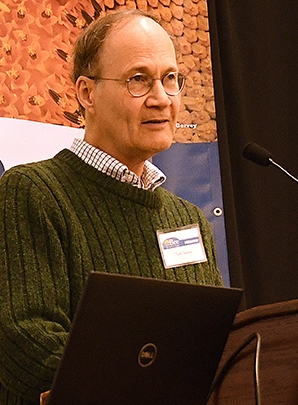
So said bee scientist Thomas Seeley, the Horace White Professor in Biology, Department of Neurobiology and Behavior, Cornell University, when he addressed the 2018 UC Davis Bee Symposium on "Darwinian Beekeeping."
Seeley, who studies feral or wild bee colonies in the 4200-acre Arnot Teaching and Research Forest owned by Cornell University, emphasized that "honey bees are superb beekeepers; they know what they're doing."
Fast forward or "buzz" forward to Africa.
Have you ever seen a feral bee colony of the African honey bee, Apis mellifera scutellata?
Son James Keatley Garvey, CEO and founder of Self LLC, captured images of a feral bee colony on Feb. 19, 2013 in a fig tree in the Maasai Mara National Reserve, Kenya.
The colony's architecture is nothing short of incredible--sort of like immaculate construction! Comb building, as evolutionary biologist Charles Darwin observed, is "the most wonderful of all (insect) instincts."
Josh van der Ploeg of andbeyond.com--he's a guide, public relations manager and podcast host--told us in an email that scutellata is "the more commonly occurring bee species inland. The tree they have constructed their hive on is a giant-leaved fig tree or Ficus lutea."
Bees share the Maasai Mara National Reserve with The Big Five (lion, elephant, rhino, leopard and African buffalo) as well as four more to tally The Big Nine: cheetah, giraffe, hippo and zebra. The reserve, primarily of savannah grasslands, rolling hills, and riverside crossings (Mara and Talek rivers), is located along the Great Rift Valley area, about 140 miles from the capital city of Nairobi. Established in 1961 as a wildlife sanctuary and now comprised of more than 700 square miles, it also hosts the Great Migration, known as one of the Seven Natural Wonders of Africa, and one of the ten Wonders of the World.
“I've not been to Africa, but I have read a fair amount about beekeeping in different parts of the continent,” Seeley wrote in an email. "I know that in the grassy woodland regions, nest sites are rare for colonies, so often they have to nest in the open, as shown in your son's photo. If a swarm sees a protective cavity, it will use it. This is why beekeepers in this region of Africa have good success in hanging up log hives."
Log hives are the most widely used type of hives in Africa, according to the Apiculture Platform of Kenya.
Seeley, who teaches courses on animal behavior and researches the behavior and social life of honey bees, shared an image of a log hive painting that his late mentor, Professor Roger Morse (1927-2000) of Cornell purchased in the 1970s at a market in Kenya. Morse was known as "the Cornell entomology professor who championed the art and science of beekeeping."
Seeley, who joined the Cornell faculty in 1986, has authored numerous books, including Honeybee Ecology (1985), The Wisdom of the Hive (1995), and Honeybee Democracy (2010). Look for his next book, Bees' Ways: 20 Mysteries of Honey Bee Behavior Solved, in the spring of 2024.
